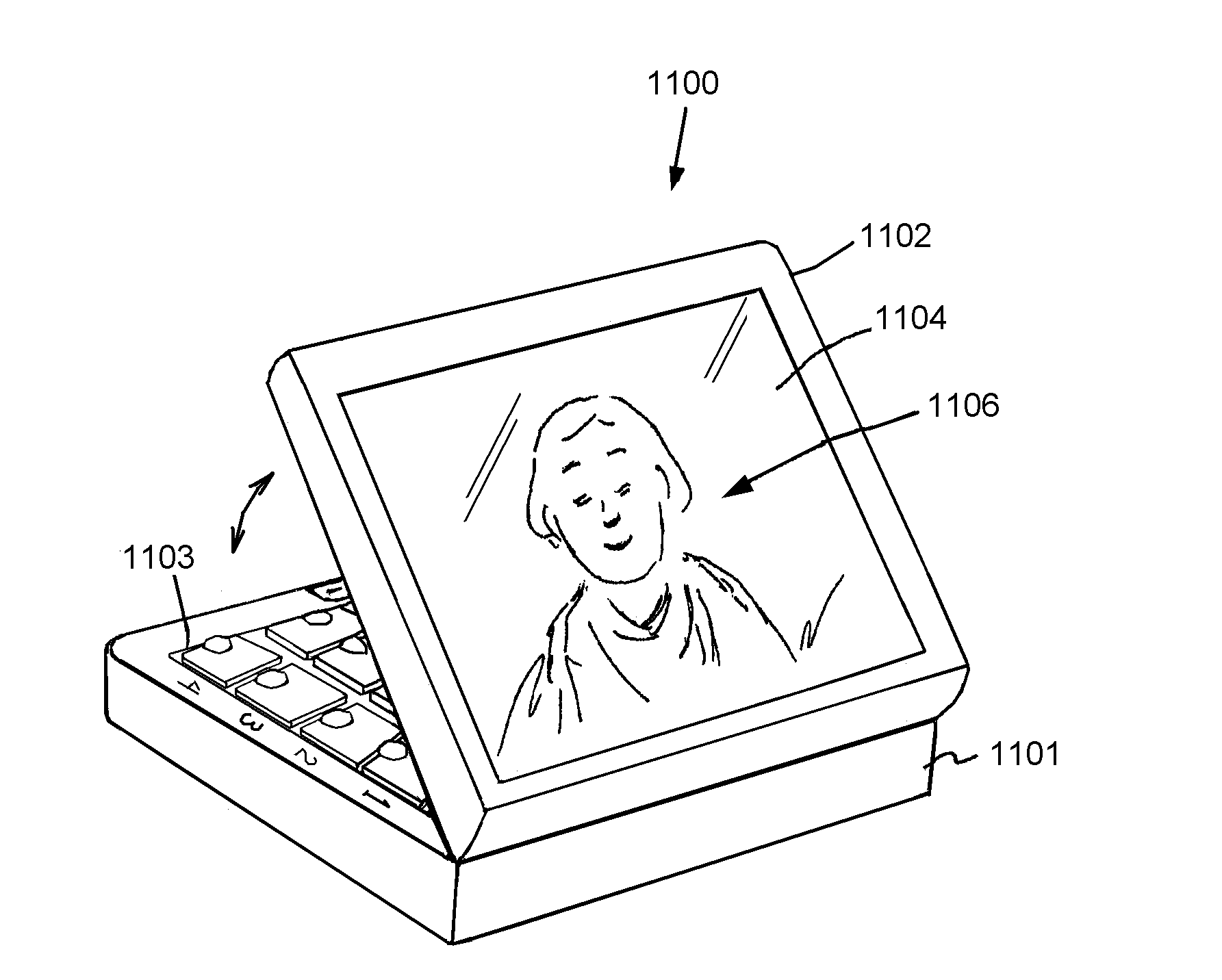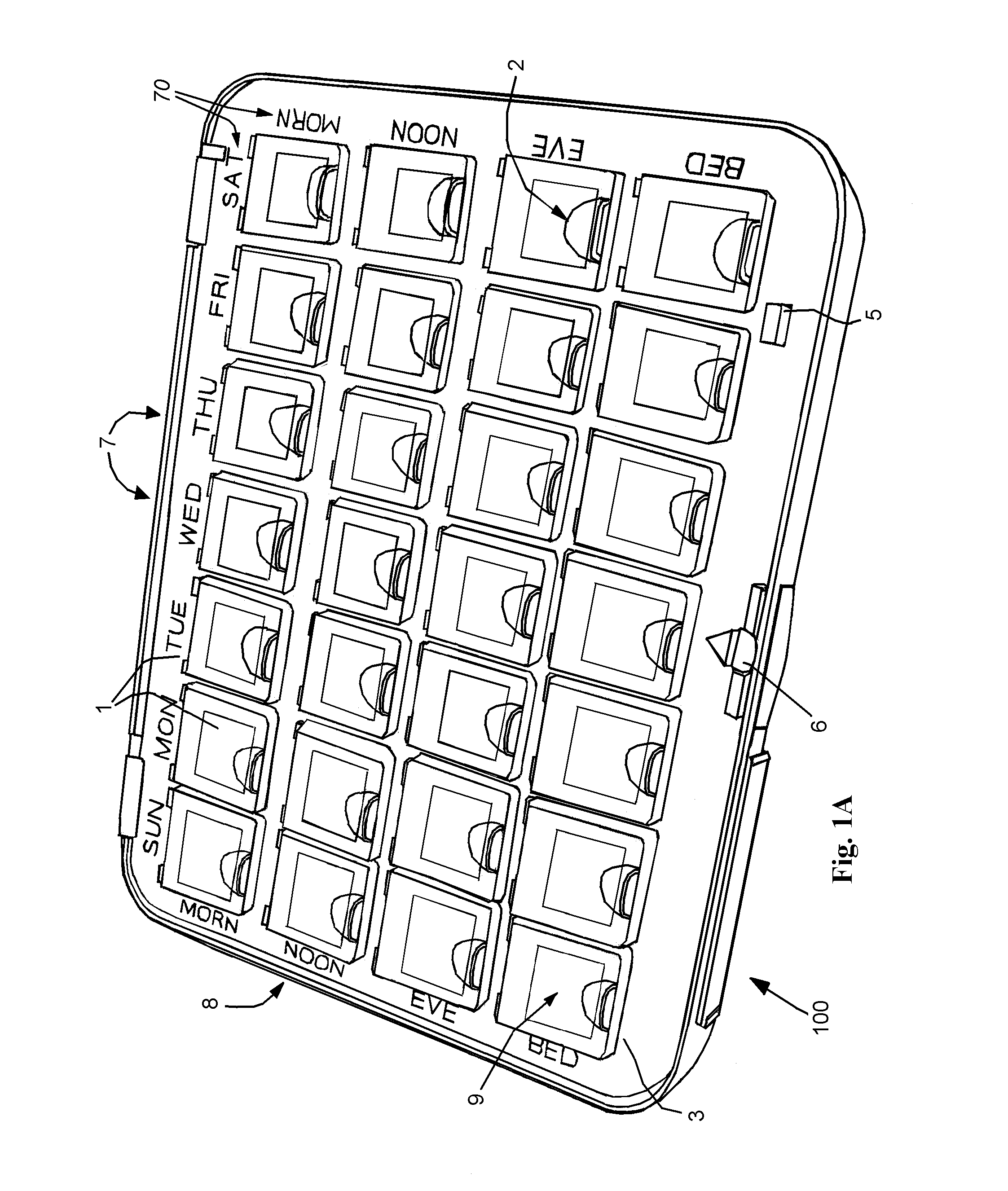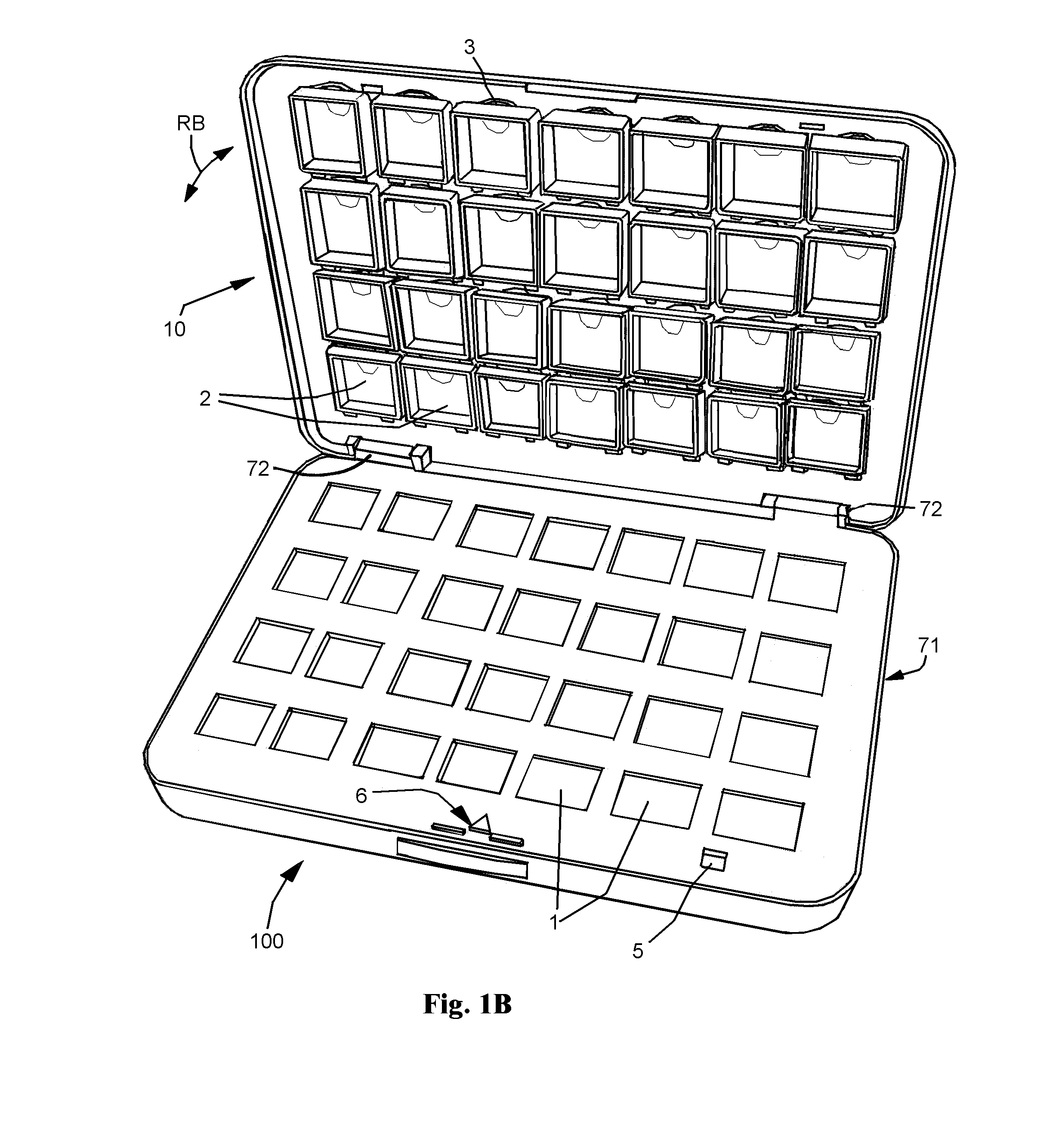Interactive medication dispensing system
- Summary
- Abstract
- Description
- Claims
- Application Information
AI Technical Summary
Benefits of technology
Problems solved by technology
Method used
Image
Examples
Embodiment Construction
[0064]FIG. 1A shows a medication dispensing system 100 according to an illustrative embodiment of the invention. The medication dispensing system (also termed a “pillbox”) 100 includes one or more medication “compartments”1. The compartments 1 are set and arranged in a removable tray 15. The compartment 1 is covered by a lid 2, which is opened using the handle 3. As used herein and described more fully below, the term “compartments” refers collectively to a cup, a moveable lid covering the cup and an orifice within the body in which the cup resides. The moveable lid 2 can be furnished with a variety of movement devices, included a hinge assembly. As used herein and described more fully below, the term “orifice” refers to an individual well that is designed to hold a single removable cup. Each compartment is constructed and arranged to allow removal and replacement of the respective cup in order for a user to access the medication contained therein. The cups are designed to contain m...
PUM
 Login to View More
Login to View More Abstract
Description
Claims
Application Information
 Login to View More
Login to View More - R&D
- Intellectual Property
- Life Sciences
- Materials
- Tech Scout
- Unparalleled Data Quality
- Higher Quality Content
- 60% Fewer Hallucinations
Browse by: Latest US Patents, China's latest patents, Technical Efficacy Thesaurus, Application Domain, Technology Topic, Popular Technical Reports.
© 2025 PatSnap. All rights reserved.Legal|Privacy policy|Modern Slavery Act Transparency Statement|Sitemap|About US| Contact US: help@patsnap.com



